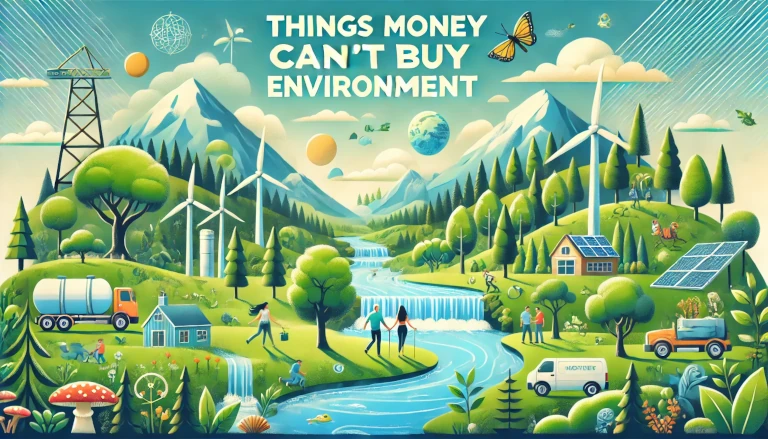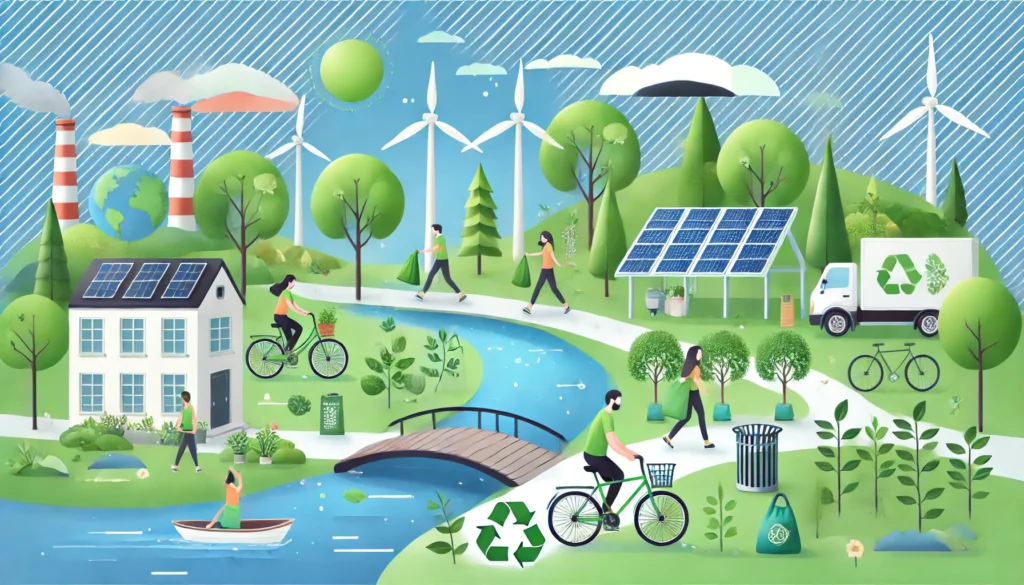In today’s world, we often think that money can buy anything. But when it comes to the environment, there are several things that are priceless. No matter how much money you have, certain aspects of nature and the environment are irreplaceable, and once they’re lost, they’re gone forever. In this blog post, we will explore some of the most precious things in the environment that money can’t buy, and why they are crucial for our planet and future generations. Lets value Priceless Natural Wonders !
1. Clean Air
You can’t put a price tag on clean air. It is a basic necessity for life, but in many parts of the world, air quality is deteriorating due to pollution. Despite all the wealth in the world, clean air cannot be manufactured or purchased—it must be preserved. When air is polluted, no amount of money can instantly turn it clean again. Once the air is contaminated with harmful gases like carbon dioxide, sulfur dioxide, and nitrogen oxides, the consequences can be severe for both human health and ecosystems.
Example:
Many cities like New Delhi or Beijing face air quality issues due to smog and vehicle emissions. No matter how rich the citizens may be, they still suffer from the effects of air pollution.
2. Fresh Water
While bottled water may be sold in stores, the planet’s natural freshwater resources are irreplaceable. Rivers, lakes, and underground aquifers provide fresh water, which is essential for drinking, agriculture, and maintaining biodiversity. No amount of money can restore a polluted or depleted water source once it’s gone. Freshwater scarcity is a growing issue, and it’s a natural resource that money can’t buy.
Example:
Regions experiencing drought, such as parts of California or sub-Saharan Africa, show how precious freshwater is. Even with modern technology, replenishing a dried-up river or lake is extremely difficult.
3. Healthy Ecosystems
A healthy ecosystem consists of balanced relationships between plants, animals, microorganisms, and the physical environment. These ecosystems, whether they are forests, oceans, or wetlands, provide essential services like pollination, water purification, and carbon storage. However, when ecosystems are damaged by deforestation, pollution, or overfishing, they cannot be easily restored, no matter how much money is spent.
Example:
The deforestation of the Amazon Rainforest is destroying one of the world’s most crucial ecosystems. Even if billions of dollars were poured into replanting trees, it would take centuries to restore the ecosystem to its original state.
4. Biodiversity
Biodiversity refers to the variety of life on Earth, including plants, animals, and microorganisms. Biodiversity is vital for a healthy environment because it maintains ecosystem balance and resilience. However, when species go extinct due to habitat loss, climate change, or pollution, they are gone forever. No amount of money can bring back an extinct species.
Example:
The extinction of the passenger pigeon, once one of the most numerous bird species in North America, is a tragic reminder of how biodiversity can be lost. Despite conservation efforts today, once a species is extinct, it is lost forever.
5. The Ozone Layer
The ozone layer is a protective shield in the Earth’s stratosphere that absorbs most of the sun’s harmful ultraviolet (UV) radiation. While technological advancements can help reduce damage to the ozone layer, no amount of money can replace it. Protecting the ozone layer is vital for preventing skin cancer, cataracts, and harm to crops and marine life.
Example:
The global ban on CFCs (chlorofluorocarbons) has helped heal the ozone layer over time, but the process is slow. It will take decades for the ozone layer to fully recover, and any further damage could take generations to repair.
6. Natural Beauty and Scenic Landscapes
Nature offers us breathtaking beauty in the form of mountains, forests, beaches, and deserts. These scenic landscapes are priceless, providing inspiration, peace, and a sense of wonder. Although tourism can bring economic benefits, no amount of money can truly replicate or replace the beauty of a natural landscape once it’s lost to urbanization or environmental degradation.
Example:
The Great Barrier Reef, known for its stunning coral and marine life, is under threat due to climate change and ocean acidification. No matter how much money is invested in conservation, if the reef dies, its natural beauty will be lost forever.
7. Pollination by Bees and Insects
Bees and other pollinators play a crucial role in agriculture and ecosystems. Pollination is an ecosystem service that supports the production of fruits, vegetables, and seeds. While there are efforts to replicate pollination with technology, no amount of money can fully replace the efficiency and scale of natural pollination by insects.
Example:
In some parts of China, farmers are forced to manually pollinate fruit trees due to the decline in bee populations. This is a costly and inefficient process that highlights the importance of protecting natural pollinators.
8. Time
In the environmental context, time is one of the most important things we cannot purchase. Once environmental damage occurs, reversing it takes an incredible amount of time. For example, restoring a forest after deforestation, cleaning up an oil spill, or healing coral reefs after bleaching can take decades, if not centuries.
Example:
The Chernobyl disaster in 1986 caused a massive release of radioactive materials. Even today, nearly 40 years later, the area remains uninhabitable, and it will take thousands of years for the radiation to fully decay.
9. Climate Stability
Stable climate conditions are essential for agriculture, water resources, and the overall functioning of ecosystems. With the increasing impact of climate change, more frequent and intense weather events like hurricanes, floods, and droughts are becoming common. Climate stability is something that cannot be bought or restored once lost, and its effects are far-reaching.
Example:
The rising global temperatures are leading to melting ice caps and rising sea levels. Coastal cities and island nations face a real risk of disappearing underwater, regardless of the wealth of their inhabitants.
10. Human Connection with Nature
Lastly, the connection between humans and nature is something money cannot buy. Spending time outdoors, feeling the fresh breeze, and hearing the sounds of birds chirping are priceless experiences that enhance mental health and well-being. In a world increasingly dominated by urban environments, this connection is at risk of being lost.
Example:
People living in densely populated cities often have limited access to parks or green spaces. Despite advances in virtual reality, no technology can truly replicate the experience of walking through a forest or hiking in the mountains.
Money may provide many comforts, but when it comes to the environment, there are priceless aspects that cannot be bought. Clean air, fresh water, biodiversity, and natural beauty are just a few of the treasures the environment provides us, and once they are lost, no amount of money can bring them back. It’s up to all of us to protect these irreplaceable parts of nature for future generations.
Read this in Marathi at पैशाने खरेदी करता न येणाऱ्या गोष्टी: अमूल्य नैसर्गिक चमत्कार
Discover more from Green Ecosystem - Renewable Energy, Agriculture, and Environmental Sustainability
Subscribe to get the latest posts sent to your email.


